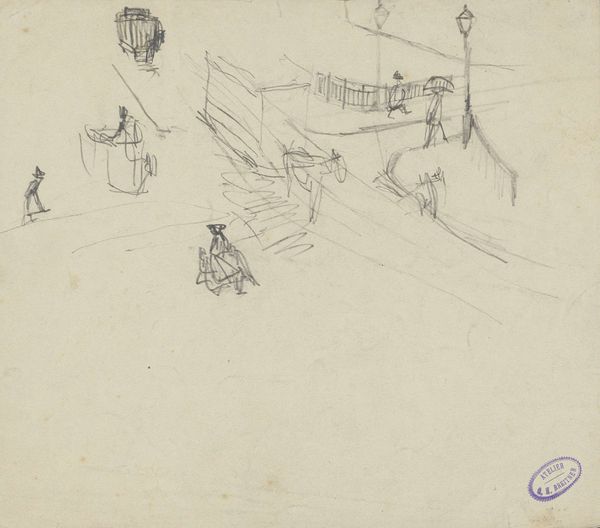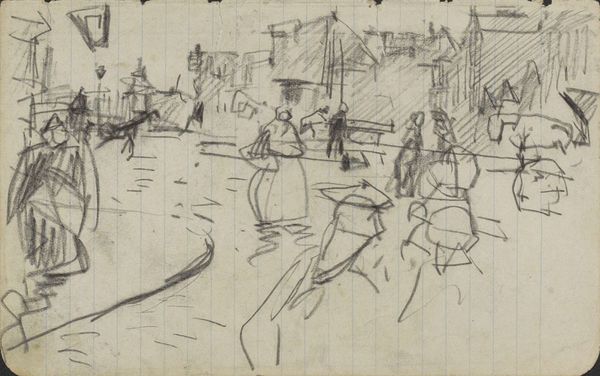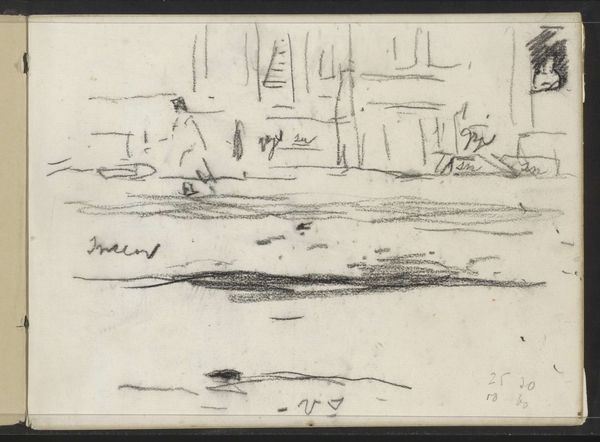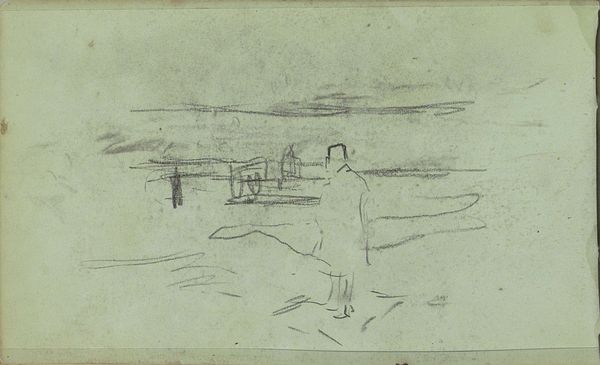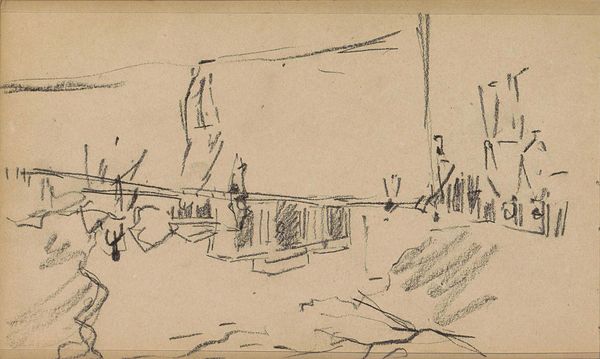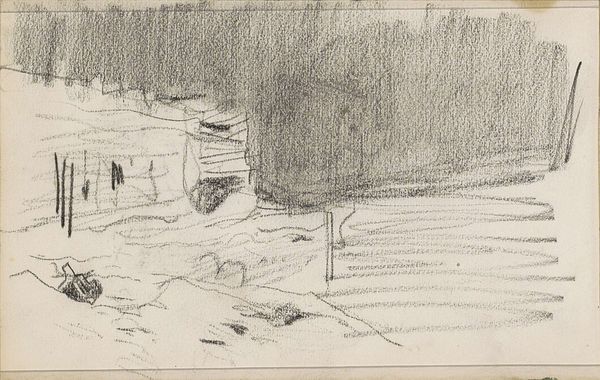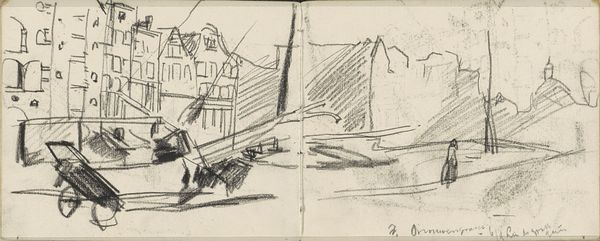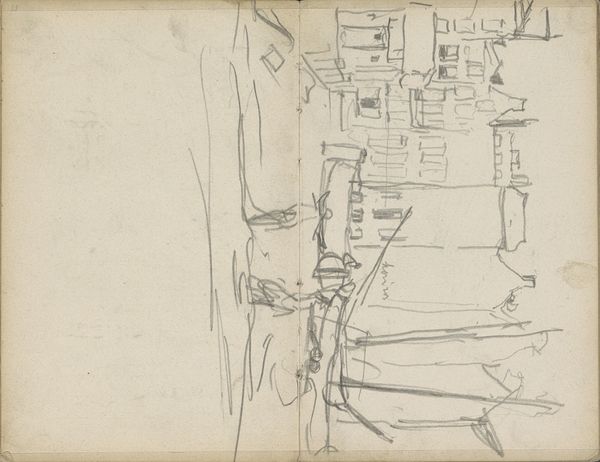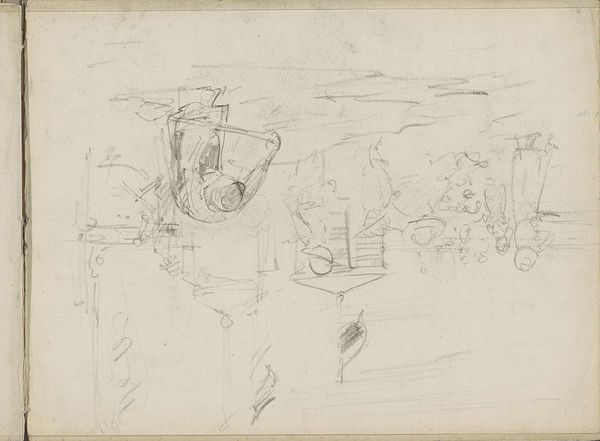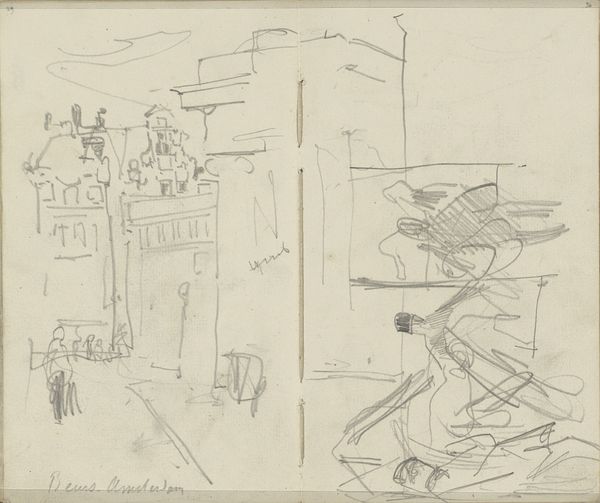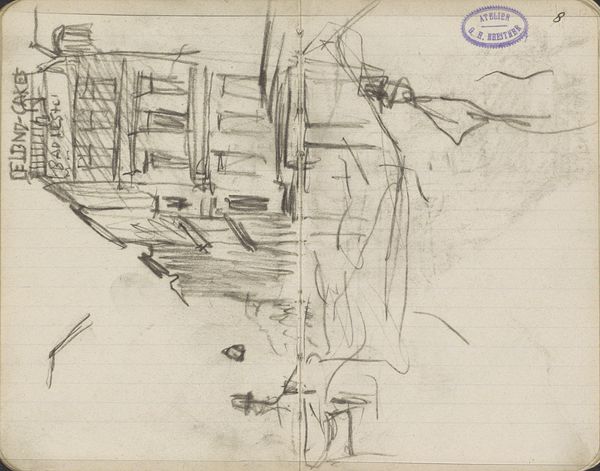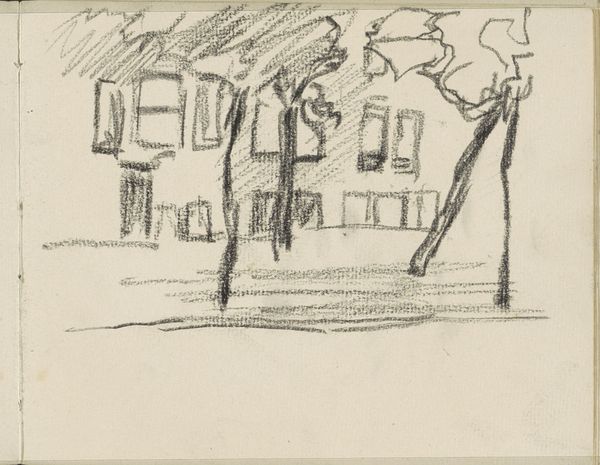
Dimensions: height 170 mm, width 205 mm
Copyright: Rijks Museum: Open Domain
Curator: George Hendrik Breitner's "Figuren op een plein bij regen," or "Figures in a Square in the Rain," made in 1897. It’s a pencil drawing, currently residing here at the Rijksmuseum. What’s your initial take on this one? Editor: Dreary. Brisk and rather bleak! It definitely captures that gray-day feeling, and I imagine the chill seeping into my bones. Curator: You’ve nailed it! I think it evokes that perfectly. It’s interesting, because Breitner, while known for his cityscapes, offers such an unfinished quality in this piece. You almost feel like you're intruding on a private sketchbook. The very absence of completion pulls me in. Editor: Right! It makes me think about how public spaces are experienced differently by different bodies – like who is afforded the luxury of pausing to observe when it rains versus who is hurrying to get to work in order to survive? We see these blurry, almost ghostly figures... Curator: Absolutely, those spectral figures hurrying. You notice he barely defines their faces, and with just a few quick lines, he indicates their movement and, dare I say, their mood. And the reflections on the wet pavement – a minimal touch, but so effective in conveying the scene's atmosphere! It reminds me of a half remembered dream of Amsterdam. Editor: It’s true, the quick sketch quality adds to the immediacy. It is an image of a specific time and place and reminds me that impressionism came about during rapid urbanization and technological development. How does art document that for the average citizen in times of rapid change? The facelessness becomes not a bug, but a feature! The lack of specific identities opens the way to a generalized portrait of the era’s anxieties. Curator: Precisely! In fact, it’s quite fascinating how such simplicity manages to encapsulate the zeitgeist. Maybe that's the key; it leaves enough space for the viewer to insert themselves into that historical moment, under that very sky, feeling the same drizzle on their faces. Editor: Exactly, and understanding its cultural and historical contexts reveals it is less about weather and more about capturing a moment in time of immense socio-political upheaval, particularly during that pivotal moment of the industrial revolution in Europe. Curator: What a fresh way to think about it! I’m grateful to walk through rainy Amsterdam, even if just in our minds! Editor: Me too. Now, I want to think about this image in connection with others from that time. How were female bodies captured and perceived in those same eras versus masculine coded representations?
Comments
No comments
Be the first to comment and join the conversation on the ultimate creative platform.
